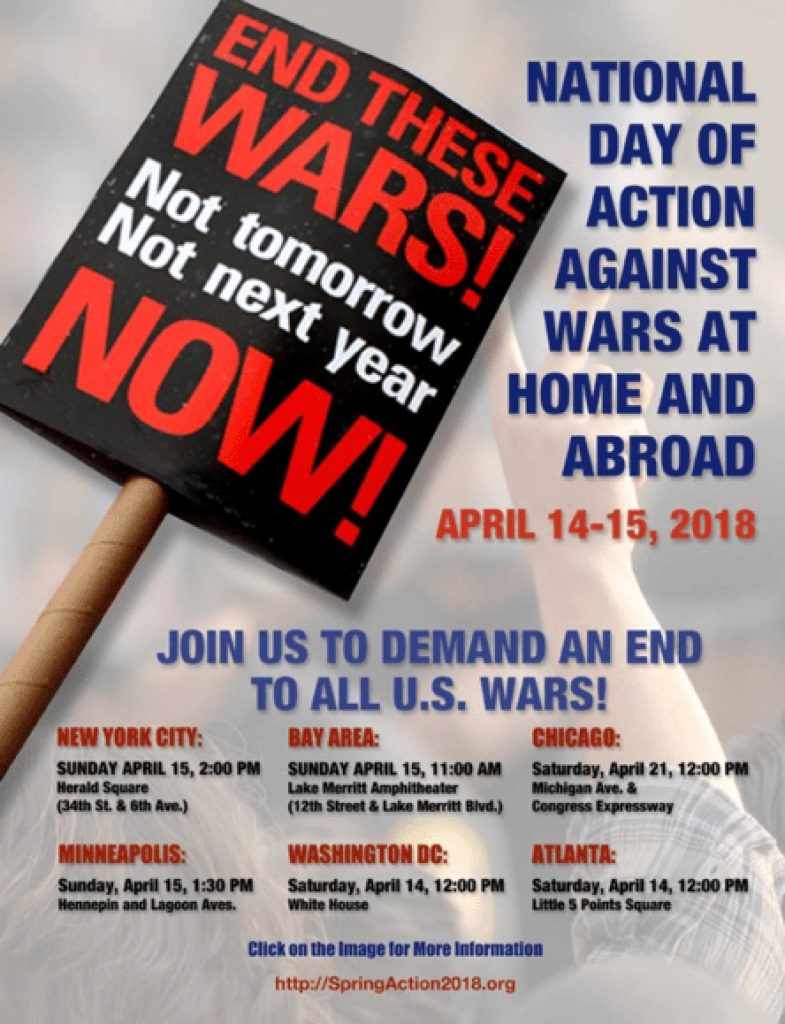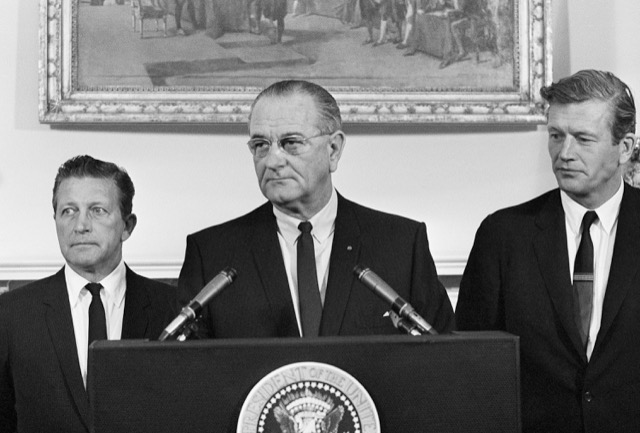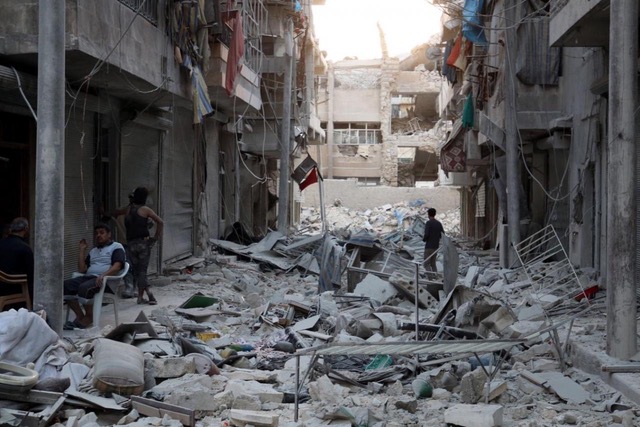War Comes Home

There’s Something Happening Here
What it is aint exactly clear
There’s a man with a gun over there
Telling me I got to beware.”
(“For What It’s Worth,” Buffalo Springfield, 1967)
Hopeless task to keep up with the carnage on America’s streets, in schools and venues, outrunning Suspicious Angels’ attempt to document it. On Wednesday, November 7, the day after the mid-term elections, twelve people, a mixture of college students, a policeman, and just plain folk lost their lives in the latest murderous rage of another young American at a California restaurant. What followed: the now-familiar round of makeshift memorials, candlelight vigils, universal thoughts and prayers. This piece is dedicated to the grieving mom, whose son survived the Las Vegas massacre but died in this shooting. Here’s how she put it: “I don’t want prayers, I don’t want thoughts, I want gun control.” We join her in speaking out for an end to the slaughter of innocent people at home and abroad.
As we at Suspicious Angels along with Americans everywhere ponder the meaning of the senseless violence in what we used to consider “safe spaces,” we watch with a mixture of rage, sadness and despair as the 24-hour news cycle brings us the latest atrocity —the massacre of eleven innocent people at a synagogue. Several weeks before, television and social media sites were ablaze with reports of democratic political leaders and wealthy democratic donors receiving pipe bombs.
The perpetrators shared several disturbing traits: they were “haters,” whose personal disappointments had morphed into a raging desire to blame someone else. In the case of the bomber, it was “liberal” politicians and their donors who were out to get him. The general manager of the pizza restaurant where he once worked painted a fearful portrait of a mind gone off the rails: “He was… angry at the world, at blacks, Jews, gays, he always talked about ‘if I had complete autonomy none of these gays or blacks would survive.’” The synagogue murderer was also incurably paranoid believing that Jewish people were responsible for the things that had gone wrong in his own life: “I can’t sit by and watch my own people get slaughtered… I just want to kill Jews.”
On October 28, another loose cannon unable to force his way into a Jeffersontown, Kentucky African American church turned his rage on two innocent black shoppers at a nearby grocery store. What followed were the by now worn-out expressions of sorrow and regret — “Our hearts break for those we lost to the tragedy…” ending with the usual hopelessly vague assurances of governmental action— “The murders are not being taken lightly by the United States government. Federal investigators are examining this matter from the perspective of …civil rights violations which include hate crimes.”
As far as mindless violence goes, shootings at U.S. schools are noteworthy for their frequency and deadliness. America’s war on children in and out of school is a national disgrace. According to a 2018 World Health Organization study (published in the American Journal of Medicine), 91% of children younger than 15 killed by gunfire live in the U.S. If that doesn’t sicken you, read on—according to an analysis by the Washington Post, in the U.S. in 2016 an average of 24 children were shot every day!
Schools are not the only venues that draw sick, twisted individuals with legally acquired guns in their hands and malice on their minds. Houses of worship have become another frequent target — in addition to the recent synagogue murders, in 2017, 26 lost their lives in a Texas church, in 2015, 9 were murdered in a Black church in Charlottesville, South Carolina.
Public gatherings cannot escape the fall-out from the mass shooting epidemic. In 2016, 49 lost their lives as they were partying at a nightclub in Orlando, Florida. In the deadliest mass shooting by a single person in the U.S., on October 1, 2017, 59 people attending a country music festival in Las Vegas were helpless victims of yet another wing nut killer.
A comparison of school shootings in other countries puts another notch in the belt of exceptional America. Guess when the last school shooting occurred in Great Britain? In 1996 with the shooting of 16 young children and one teacher. How did Britons react — “It looked like we were going down the road of American gun violence…and it wasn’t what people wanted…there was a turn in the tide of public opinion…and a revulsion against guns.” As a result, both Labour and Conservative governments tightened gun ownership laws focusing on improving the licensing system and outlawing most handguns. Today Great Britain has some of the world’s strictest gun control laws. Did it do the trick? Judge for yourself. There has not been a school shooting in the U.K. since 1997. The last mass hooting was in 2010 — eight years ago. Meanwhile back at the exceptional nation another first — the gun homicide rate in the U.S. is twenty-five times higher than in any other high-income country in the world.
How do we make sense of America’s love affair with guns and the innocent lives that are its sacrificial lambs? Here’s how the late Charlton Heston, past NRA president defended unregulated gun ownership — As we set out this year to defeat the divisive forces that would take freedom away, I want to say those fighting words for everyone within the sound of my voice to hear and to heed…: ‘From my cold, dead hands.”
Over the years, the U.S. has made some, mostly lame attempts to rein in the abundance of guns. In 1994 Congress and the President (Bill Clinton) passed legislation banning a small cache of automatic weapons. As is the case with much of what passes for judicious lawmaking millions of NRA dollars had the desired effect: ten years later the bill wound up in the trash can.

Which is where most U.S. gun control legislation lands. Five years earlier in 1989, President George H.W. Bush supported a bill banning the importation of foreign-made automatic rifles while at the same time making no effort to stop domestic gun makers from manufacturing and selling rifles of similar potency (which yielded them an enormous profit). Even the 1968 assassinations of a presidential candidate (Bobby Kennedy) brother of an assassinated president (John F. Kennedy) five years earlier and a political leader and Nobel Prize winner ((Martin Luther King) didn’t move the needle much. Here’s President Johnson’s oddly prophetic reaction to the passage of the Gun Control Act of 1968 — “…this bill…falls short. I asked for the national registration of all guns and the licensing of those who carry those guns…there are over 160 million guns in the country —more firearms than families … [50 years later 265 million guns are in circulation in a population of 320 million] …The voices that blocked these safeguards were not the voices of an aroused nation [but] the voices of a…gun lobby.” As if to prove Johnson right, the gun lobby was over the moon with joy — “the measure as a whole appears to be one that the sportsmen (NRA euphemism for gun owners) of America can live with.”
The history of federal “gun control” legislation is riddled with paybacks from a grateful congress and executive branch (both republican and democratic) for the campaign contributions of the rich and powerful gun lobby. Even the Supreme Court has proven to be no match for a gun lobby whose tentacles reach into every corner of the federal bureaucracy. Joining their hapless peers in Congress and the Executive branch, in 2007 the Supreme Court in a 5-4 decision declared a DC law banning handguns unconstitutional on second amendment grounds — “…the right of the people to keep and bear Arms, shall not be infringed.” (District of Columbia v. Heller)
From the moment settlers of what would one day become the exceptional nation set foot on someone else’s land, our forefathers never hesitated to use violence to satisfy imperial dreams. By some estimates, nine million native Americans were murdered by generations of invaders (the ones we celebrate at Thanksgiving).

From native Americans to the rest of the world, the U.S. has never strayed from the principle that perpetual war will bring long-lasting peace. The history of U.S. foreign policy since 1945 has been a series of U.S.-inspired wars conducted with much fanfare usually against less powerful nations, almost always against people of color —Korea in the fifties, Vietnam in the sixties and laughably tiny Grenada in the eighties. Yugoslavia was the target in the nineties, and a collection of Mideast and African nations starting with Iraq and Afghanistan extending to Libya and beyond did the honors in the first two decades of the twenty-first century. Most U.S-inspired wars qualify as hate crimes. In a similar vein, the shooter who murdered two innocent people at a supermarket told a potential white victim begging for his life “Whites don’t shoot whites.”
What is the link between mass shootings at home and U.S. wars with their horrific number of casualties among innocent civilians? According to a recent Brown University study, at least one-half million have been victims of U.S. war-making in Iraq, Afghanistan and Pakistan in the last seventeen years. Likely, an “undercount,” due to the “great uncertainty in any count on killing in war.” Trained to consider everybody an enemy, fighting in wars with no clear mission, many of the young people who fight America’s wars are incalculably wounded in body and mind. Peace activist David Swanson reports that since 1982, thirty-five percent of U.S. mass shooters are returning vets. Even the suicide rate among returning veterans (21/day) bears witness to the disastrous consequences of bloody wars on the soldiers who fight them.
As the death toll from mass shootings rises, it’s hard to ignore the obvious—foreign wars, rather than keeping us safe, have put Americans at greater risk. As the U.S. doctrine of endless war extends its deadly reach, so too does domestic terrorism.
Fifty-one years ago, Dr. Martin Luther King, Jr. made the connection between the wars we were fighting in Vietnam, Cambodia, and Laos with the rage and despair on U.S. streets:
“As I have walked among [the angry young people] I have told them that Molotov cocktails and rifles would not solve their problem. I have tried to offer them compassion… while maintaining my conviction that social change comes…through non-violent action…But they ask if our own nation wasn’t using massive doses of violence to solve its problems, to bring about the changes it wanted…”
—Dr. Martin Luther King, “A Time to Break the Silence” April 4, 1967
He wasn’t the only one to see the handwriting on the wall. In 1968 a Buddhist leader in Vietnam observed “The image of America will never again be of…freedom and democracy but the image of violence and militarism.” The “safe spaces” in what the government now calls the “homeland” is feeling the effects of that reversal.
Meanwhile blood will keep flowing. In a kind of fearful symmetry, each mass shooting follows the same deadly path. First, the killings, then public shock (“this can’t be happening again’), followed by official expressions of grief from a solemn procession of elected officials closing with the vow to “do something about it.” For those who witness the violence from afar, a moment of grief. For victims’ families grief that lasts a lifetime.
As with all the thorny problems the exceptional nation faces, solutions exist but no U.S. leader is willing to tackle them. Can you imagine a U.S. president proclaiming that “There is nothing …to prevent us from reordering our priorities so that the pursuit of peace will take precedence over the pursuit of war.” Maybe such a leader not afraid to be turned into a pillar of salt upon breathing the word “peace” exists but in some other country.
The most powerful nation in the world needs a new moral calculus that equates the deaths of people in Iraq, Afghanistan, Yemen, Pakistan, everywhere U.S. bombs are falling with the grief and sorrow we feel for innocent Americans murdered at home. Failing that, America will suffer the same fate as other predator nations “dragged down the long, dark, and shameful corridors of time reserved for those who possess power without compassion, might without morality, and strength without sight.” (Rev. Martin Luther King, Jr. ”A Time to Break the Silence,” April 4, 1967)
“Paranoia strikes deep
Into your life it will creep
It starts when you’re always afraid…”
(For What It’s Worth)
941 total views, 1 views today
